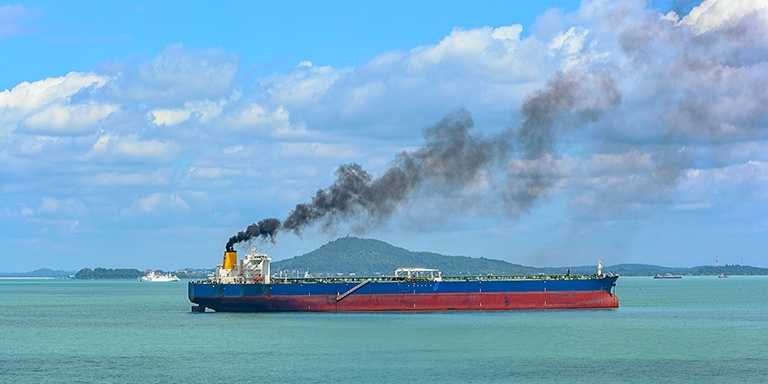Companies of all sizes can no longer ignore environmental, social and governance (ESG) factors in their businesses, but small and medium-sized enterprises (SMEs) often have difficulty assessing and reducing their carbon footprint. This is especially true for their supply chains and production processes.
The Hong Kong Trade Development Council in February hosted a webinar on ESG strategies, aiming to advise SMEs on the best way forward.

Simeon Woo, Economist (Global Research), HKTDC Research, referred to the HKTDC and PwC survey "Challenges and Opportunities Brought to Hong Kong by ESG Investment", pointing out that more than half of the respondents believe institutional companies will miss business opportunities by ignoring ESG factors. Of the respondents, nearly 40% believed ESG factors would affect their corporate image and influence the public reputation of their organisations and direct long-term sustainable development.
The report also showed how the participation of the company's management, including executives, in ESG will effectively encourage the company to move towards sustainable development.
Mr Woo said the absence of a unified ESG measurement was a key obstacle to implementing ESG measures. "ESG has become an international trend, and it is not only about corporate image but also about the loyalty of enterprises and different stakeholders such as employees and consumers. Good ESG performance helps companies achieve more flexible supply chain management, and implementing ESG is the cornerstone of an important direction for companies to maintain competitiveness in the long run."
To achieve sustainable supply chains, Mr Woo suggested companies incorporate ESG into their development strategies as soon as possible. Transparent supply chains provide important real-time information for enterprise decision-making, reducing business risks and improving product performance. Supply chain traceability refers to the integration of existing data by enterprises. Improved traceability helps enterprises understand the multiple supply-chain risks and formulate crisis management solutions that can be handled more efficiently in the event of a crisis.
As long as these measures are implemented effectively, enterprises can establish a transparent supply chain system that will help other companies understand their own status in the supply chain and achieve a sustainable, efficient, trustworthy and resilient supply chain system.
Net-zero emissions

Martin Fan, Managing Director at TÜV Rheinland Hong Kong, told the webinar that in response to climate change, the world's major economies had set a net-zero emissions roadmap leading up to 2050. In Mainland China, for example, the government last year announced a 2030 roadmap. By 2025, the proportion of non-fossil fuel energy consumption will reach about 20%; and 25% by 2030. Carbon dioxide emissions will need to drop more than 65% from 2005 levels for the country to reach peak-carbon emissions by 2030.
“We have seen that many governments have implemented policies to promote trade and investment in green technologies, goods and services. Following the COVID-19 pandemic, international trade and investment agreements are expected to continue to strengthen and embody the promotion of sustainable development at other levels,” Mr Fan said.
Many SMEs often find it impossible to develop ESG strategies. Mr Fan suggested SMEs start by understanding the carbon footprint of their own business as the quality of carbon emission management will not only affect the attitude of investors, but also affect the company's image, which in turn will affect consumers’ desires and perceptions.
“According to the survey, the top 15% of companies with the best ESG performance, whether they are from Europe or Asia, have better financial capabilities. For example, when you are engaged in electronics, you need to understand the carbon emissions from each production phase. This requires accurate measurement and calculation, but these data can let you know your own company’s ranking and competitive advantage in the industry.”
Sharper competition
Mr Fan said companies should not use “greenwashing” for ESG. Using words such as eco-friendly, clean and non-toxic are not necessarily equivalent to ESG. The three Rs – reuse, recycle and reduce – encapsulate carbon-reduction goals. "It is a very important concept, because more and more customers are looking for brands and purchasing products according to these indicators. But pay attention to Base Year/Base Line, because when you set and mark the ESG target year, you must first know what the carbon emissions of your own business are and how much room there is for improvement. Companies and well-known brands often formulate carbon-reduction targets in three different stages according to their own business conditions.”
Mr Fan emphasised that ESG has become an indispensable tool that global enterprises can use to achieve sustainable development. It is suggested that enterprises should first understand where their company currently stands in relation to ESG, and then adapt to the actual situation – for example, in the business management structure. “Only by adding an ESG committee on the inside can companies comprehensively formulate and monitor their carbon-reduction goals and progress in their business. For large-scale small and medium-sized enterprises, they can further formulate ESG reporting standards, and regularly explain and announce the carbon reduction situation to investors and the public.”
Related links
HKTDC Research

